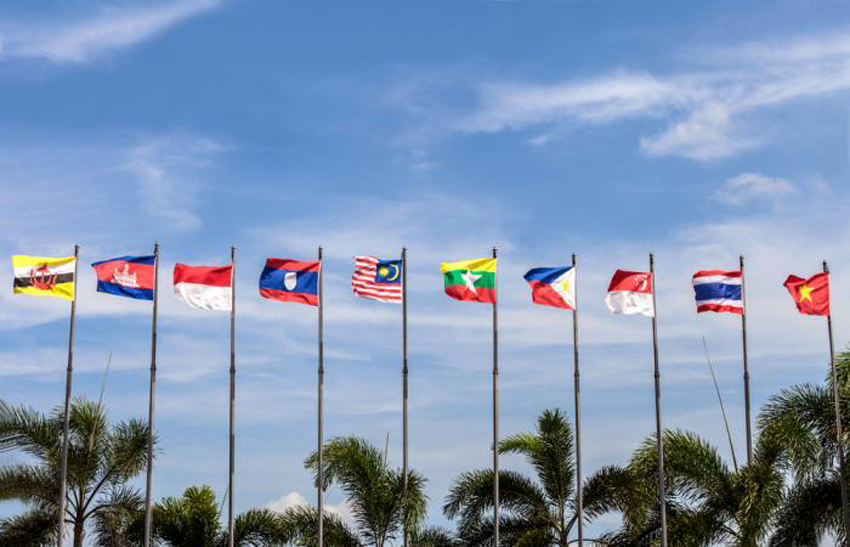Decent Growth in Iran's Trade With ASEAN

EghtesadOnline: Iran’s non-oil trade with member states of the Association of Southeast Asian Nations reached $2.63 billion during the eight months to November 22, registering 55.5% growth year on year.
According to the Islamic Republic of Iran Customs Administration, Thailand was the largest partner in the ten-nation grouping, with $619 million worth of trade, 53% higher than the same period in the previous Iranian fiscal. Thailand alone accounted for 24% of Iran trade with all ASEAN states.
Bangkok and Tehran have set a target to increase annual trade to $2 billion. In October 2015 they had agreed to cut import tariffs on a list of 100 traded commodities.
Singapore was Iran's second largest ASEAN partner with $487 million in two-way trade -- a 10% rise year-on-year, according to Financial Tribune.
Iran-Malaysia trade grew by 69% to $486.5 million.
Trade with Indonesia and Vietnam amounted to $485 million and $325 million, respectively.
> Exports Rise 80%
Iran exported $1.28 billion worth of non-oil goods to the 10 ASEAN nations, registering 80% YOY growth. The major exports included steel, pistachio, butane, propane and figs.
Thailand was the main export destination during the period under review, as the country imported $383 million worth of non-oil Iranian goods, mostly steel. Exports to Thailand increased by 80% YOY.
Thailand is the world’s fourth largest importer of steel. During the eight-month period, more than $357 million worth of steel was exported to that country.
Indonesia imported $360.7 million worth of non-oil goods from Iranian firms, mainly steel and petrochemicals, registering 293% growth YOY.
Iran's exports of $40 million to the Philippines saw a 674% rise YOY. Copper, worth $36 million, was the top export to this East Asian country.
Malaysia’s imports from Iran grew by 430% to $160.4 million. Oil products, bitumen and petrochemicals had the lion's share of exports to Malaysia.
Iran-Malaysia trade ties are expected to increase in the coming months as the banks of the two countries have reached agreement to remove existing hurdles. Back in February, central banks in the two countries agreed to work on integration of bank card networks so that cardholders would be able to use their local bank cards for payments in the other country. Bank Mellat has shown interest in resuming operations Malaysia.
Iran exports to Vietnam, comprised of pistachio, nuts and shrimp, decreased by 3% to $261.3 million.
President Hassan Rouhani’s visited Hanoi in 2015, during which the two sides reached an agreement to expand bilateral trade to $2 billion.
> Imports Up 37%
Iran’s imports from ASEAN amounted to $1.34 billion during the period, registering 37% rise YOY.
Iran's imports from Singapore were higher than those from other ASEAN states. Singapore exported $512.3 million worth of non-oil goods to Iran.
Sugar cane with $85 million, palm oil with $84 million, and soybean with $74 million were the top imports from Singapore during the eight months.
Vietnam registered the highest growth in exports compared to its ASEAN peers and shipped $64.3 million worth of non-oil goods to Iran, up 235.7% YOY.
Food products, home appliances, POS terminals and cell phones were among Iran’s chief imports from Vietnam.
Imports from Malaysia amounted to $326 million, registering 26% growth YOY.
Palm oil accounted for 41% ($133 million) of Malaysia’s exports.
Imports from Thailand amounted to $237 million, which indicates a 21% rise compared with last year’s $195 million.
MDF was Iran’s main import from Thailand with $76 million. Iran also imported 77,000 tons of rice (worth $45 million) from that country during the eight-month period.
In February Thailand secured a deal to sell rice to Iran for the first time in 10 years. Previously, Iran used to import 700,000 to 1 million tons of rice from foreign countries, about 300,000-500,000 tons from Thailand.
Thailand and Iran signed a memorandum of understanding in early 2016 to resume sales of 300,000 tons of rice worth $120 million.
ASEAN foreign ministers in 2016 agreed to Iran's request to join the Treaty of Amity and Cooperation in Southeast Asia.
The move seeks to promote closer cooperation with the international organization and contribute to Iran's economic development.


